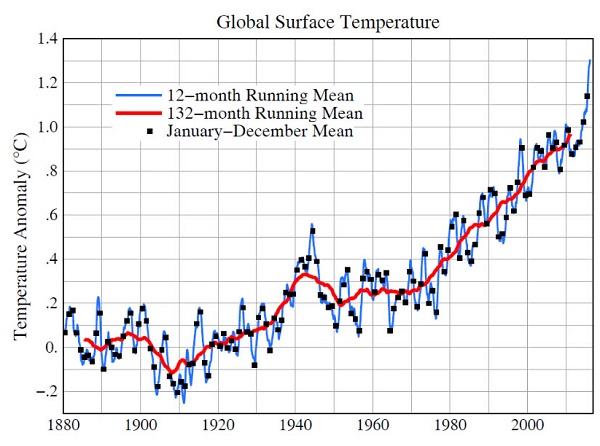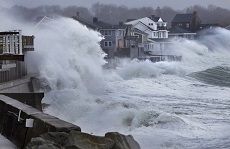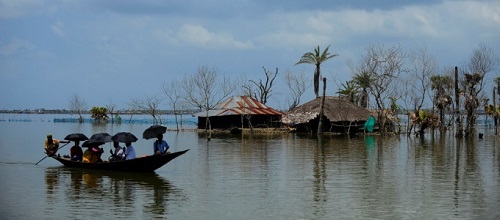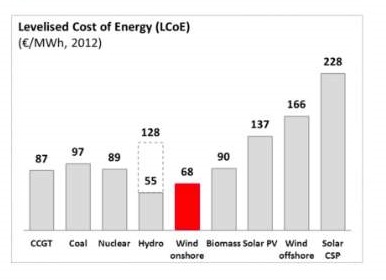 This week I’ve concentrated on the practical side of Climate change – mitigation and adaptation and the relevant policies.
This week I’ve concentrated on the practical side of Climate change – mitigation and adaptation and the relevant policies.
1. China to cap emissions
According to Giles Parkinson news reports from China indicate that the powerful National Development and Reform Commission (NDRC) has proposed a cap on emissions from 2016, from RenewEconomy, picked up at Clean Technica.
What’s more it looks as though China will cease to be an importer of coal within a few years (please note Gina, Clive et al).
Please note also, Tony Abbott and Greg Hunt. The coalition will be phasing out the carbon price just as China is phasing it in. The LNP reckoned a price on carbon was unnecessary because the rest of the world was not going there, remember?
[Update: indigo @ 8 advises that this story is based on a passing comment from a delegate of the NDRC and that no proposal has yet gone forward.]
2. Carbon markets have to take Abbott seriously!
Two weeks ago Giles Parkinson attended a day hosted by the Carbon Market Institute looking at the future of carbon markets in Australia. It seems that the audience of bankers and such had never taken the Direct Action thing seriously, they thought was just a bit of politicking. Now they are having to face the fact that Greg Hunt, former champion debater, will almost certainly be tasked to implement whatever it turns out to be.
Antony Green’s session was the best attended. The only serious question to be resolved on September 15 is whether the LNP can get the numbers in the Senate. The final numbers, Green explained, can be a lottery, with the balance of power possibly finally held by fringe candidates no-one has heard of. Still markets have to deal with the possibilities and this is how they sit:
The forward curve of the carbon market – such as it is – is pricing odds of 60 per cent that the carbon price will no longer exist by July next year, analysts say. The market odds for it to be gone by 2016 are 80 per cent.
The forward curve for contracts in the National Electricity Market is pricing the odds around the same level. Even Bloomberg New Energy Finance, which said earlier this year that there was just a 30 per cent chance of repeal, is now reviewing that assessment and is likely to lift the odds to above 50 per cent.
And yes, there is an issue of compensation, which doesn’t figure so far in LNP budgeting.
3. No more money for adaptation research
I was intrigued to find a blogger from Knoxville, Tennessee listing five policy briefs released by Australia’s National Climate Change Adaptation Research Facility (NCCARF), with seven more to come by June 30 this year. On closer investigation, I found this speech by Yvette D’Ath officially launching their research portfolio, a portfolio of more than 140 peer-reviewed research projects across 33 universities around Australia. D’Ath praised the work of the scientists and appealed to them for help in countering climate denialism.
Ironic really as the NCCARF is to be wound up by the end of June as there was no more money coming from the Government. More than 100 researchers will be affected nationally.
Instead NCCARF2 will be funded at $3 million per annum for two years as a dissemination project.
The same Knoxville blogger notes the release of the EU Strategy on Climate Change Adaptation which was produced by the Directorate-General for Climate Action, which is a program, not a project, of the European Commission. Their 2013 program of work is worth €20.75 million and the employ 160 people internally and externally.
4. Quick charging buses come to Geneva
European technology giant ABB has developed a new technology that will help power the world’s first high-capacity flash charging electric bus system, where buses will receive top up charges in 15 seconds at selected bus stops. A pilot project termed TOSA (Trolleybus Optimisation Système Alimentation) is planned in conjunction with Geneva’s public transport company.
An arm connects with an electricity outlet in the roof of the bus shelter. At the end of the run three to four minutes gives a complete charge. It’s like a trolley bus without overhead wires.
I’m wondering how electric vehicles go with heart pacemakers. I’ve just learned that you can’t use electric hand tools with a pacemaker.
This link has a video showing roughly how the bus shelter connection is made.
5. ‘Black Carbon’ flows from soil to oceans
It was thought that ‘black carbon’ created by the burning of organic matter such as grass or forests stayed in the soil for millions of years.
By examining carbon in rivers it is now thought that up to 40% of such black carbon dissolves and flows into the oceans.
6. Soil carbon farming
I gather that soil carbon farming is a different issue, but seems similarly fraught. Di Martin investigated the soil carbon conundrum.
The shorter story is that some exceptional farmers have demonstrated that soil carbon can be increased dramatically. One farmer did this by ‘pasture cropping’. Native grasses were encouraged and the crop was sown directly into the pasture, rather than plowing, harrowing etc.
Another used ‘cell grazing’, which involves high intensity and high rotation grazing, with long rest periods for pasture.
There are problems in measurement, which may be resolvable with new technology. What is not resolvable, however, is the 100-year guarantee required by international protocols if the activity is deemed to benefit the planet.
Bernard Keane, following Lenore Taylor, was rather scathing about Direct Action soil magic.
7. Renewable energy in the wars
The fossil fuel incumbents are rolling out a campaign to damage the solar industry. One nasty trick being considered in Queensland is the following:
Gross metering – a proposal made in Queensland which would force households to sell all the output from their rooftop systems to the grid operators, and buy it back at a higher price
Campbell Newman keeps saying that feed-in tariffs PV solar are “just ridiculous”.
The campaign seems to be extending to the whole Coalition policy on renewables, if there is one.
There is increasing concern in the [renewables] industry that the Opposition will pave way for the Renewable Energy Target to be diluted, under pressure from state governments, utilities and generators worried about sliding profits from their coal and gas generators, and noisy anti-renewable lobbies promoted by the likes of [Alan] Jones.
Please note the note at the end of the piece:
it seems the biggest problem the [coal] industry faces is a lack of demand. We’ve noted this before, but this week, this was reinforced by reports from China that imported coal is sitting unwanted and clogging up the country’s biggest ports.
Deutsche Bank energy analysts said this was due to “weak coal demand all over China” which had been apparent since late last year. Indeed, half the coal companies in one region of Mongolia had ceased production of thermal coal because of falling prices, and most small coal mines in Shanxi Province had also closed, Deutsche Bank reported.
8. Solar panel art
Now for something lighter: solar panel art.







 This week I’ve concentrated on the practical side of Climate change – mitigation and adaptation and the relevant policies.
This week I’ve concentrated on the practical side of Climate change – mitigation and adaptation and the relevant policies.